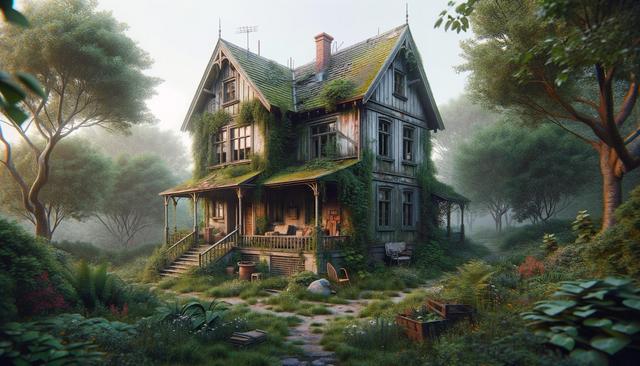Understanding Why Houses Become Abandoned
Abandoned houses evoke a sense of curiosity and mystery, but they often have practical stories behind their current state. In many cases, properties become abandoned due to financial difficulties, such as foreclosure or unpaid property taxes. Sometimes, owners move away without transferring ownership or notifying authorities, resulting in neglected structures. Other causes may include natural disasters, legal disputes over inheritance, or urban migration trends leaving rural properties unoccupied. Regardless of the cause, once a home is left vacant, it can deteriorate quickly without maintenance or oversight.
Local governments often monitor and catalog abandoned properties, especially in urban areas where they can become safety concerns. Unattended homes may attract vandalism, illegal dumping, or even squatters, which further degrades the condition of the property. These issues not only affect the house itself but also impact the surrounding community by lowering property values and creating eyesores in otherwise vibrant neighborhoods.
The Hidden Costs and Challenges of Abandoned Properties
Turning an abandoned house into a livable or sellable property can be a rewarding but complex process. First, prospective buyers or investors should conduct a thorough inspection to assess the extent of disrepair. Common issues found in abandoned homes include:
- Structural damage due to neglect or water intrusion
- Mold and mildew from prolonged exposure to the elements
- Outdated or unsafe electrical and plumbing systems
- Infestations from rodents or insects
Legal ownership of an abandoned house can also be complicated. In some cases, the title may be unclear or disputed, requiring legal proceedings to resolve. Zoning laws, building codes, and historical preservation regulations may also limit what can be done with the property. Therefore, it’s essential to work with professionals such as real estate attorneys, inspectors, and contractors to ensure the process is carried out legally and safely.
Opportunities for Restoration and Investment
Despite the challenges, abandoned houses offer unique opportunities for restoration and creative redevelopment. With vision and commitment, these structures can be transformed into family homes, rental properties, or community spaces. Many investors look for these properties as affordable entry points into the real estate market. Others are drawn by the charm and character that older homes can offer, which is often difficult to replicate in new construction.
Restoring an abandoned house can also contribute to revitalizing a neighborhood. When one home is repaired and occupied, it often inspires other homeowners and investors to improve nearby properties, creating a ripple effect of improvement. Some cities even offer grants, tax incentives, or reduced purchase prices to encourage the rehabilitation of abandoned properties. These programs aim to reduce urban blight and increase the availability of affordable housing.
Community Impact and Revitalization Efforts
Communities often play a significant role in the fate of abandoned houses. Local governments may implement policies to prevent long-term vacancy through ordinances or by taking ownership of neglected properties for redevelopment. Nonprofit organizations and neighborhood associations also contribute by organizing clean-up efforts and advocating for responsible ownership.
In some areas, community members have turned abandoned homes into:
- Community centers or shared spaces
- Affordable housing for low-income families
- Urban gardens or green spaces
These creative solutions not only address housing shortages but also bring neighbors together and foster a sense of pride in the area. The transformation of an abandoned house can thus become a symbol of resilience and renewal within a community.
Practical Steps for Getting Involved
If you’re interested in revitalizing an abandoned house, there are several practical steps to take. Begin by researching available properties through local tax records, real estate listings, or municipal auctions. Once you’ve identified a property, consider the following:
- Conduct a professional inspection to understand renovation needs
- Review zoning laws and permitting requirements
- Secure funding through loans, grants, or personal savings
- Develop a realistic renovation timeline and budget
It’s also wise to connect with local officials or community groups who may offer guidance or resources. Whether you’re a first-time homeowner, an investor, or a nonprofit leader, working collaboratively with stakeholders can increase your chances of success and reduce unforeseen setbacks.
Conclusion: Unlocking Potential in Forgotten Spaces
Abandoned houses may initially appear to be lost causes, but they often represent untapped opportunities for transformation. With careful planning, legal guidance, and creative vision, these properties can be brought back to life, benefiting both individual owners and the wider community. Whether you’re driven by investment goals or a passion for restoration, exploring the possibilities within these forgotten spaces can lead to meaningful and lasting outcomes.




Leave a Reply